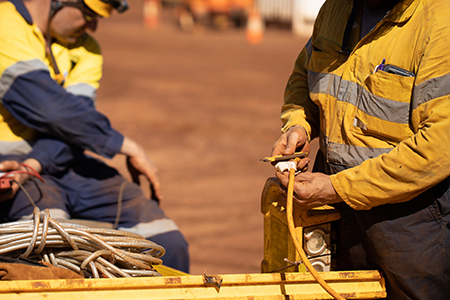The Importance of Test and Tagging in Electrical Safety
What is Test and Tagging?
Test and tagging is a process used to ensure the safety of electrical appliances in various environments. It involves testing electrical equipment for faults and tagging them as safe for use if they pass the inspection. This process is crucial for maintaining electrical safety standards and preventing accidents such as electric shocks and fires.
Why is Test and Tagging Necessary?
Electrical equipment, over time, can develop faults due to wear and tear, improper use, or environmental factors. These faults may not be visible to the naked eye but can pose serious risks if left unchecked. It helps identify these faults early on, allowing for necessary repairs or replacements to be made before any accidents occur.

Who Needs Test and Tagging?
Workplaces
In many countries, workplace safety regulations require regular test and tagging of electrical equipment to ensure the safety of employees and visitors. Industries such as construction, manufacturing, hospitality, and healthcare are particularly prone to electrical hazards due to the extensive use of electrical appliances and machinery. It helps employers comply with safety standards and create a safer work environment for everyone.
Events and Venues
Events and venues that use electrical equipment, such as sound systems, lighting, and catering appliances, also benefit from test and tagging. Whether it’s a music concert, a conference, or a trade show, ensuring the safety of electrical equipment is essential to prevent disruptions and ensure the well-being of attendees.
Education and Childcare Facilities
Schools, universities, daycare centers, and other educational institutions rely heavily on electrical equipment for teaching, administration, and daily operations. Test and tagging is essential in these environments to protect students, staff, and visitors from electrical hazards and maintain a safe learning environment.
Residential Properties
While not mandatory in all jurisdictions, homeowners can also benefit from it, especially for rental properties or homes with extensive electrical appliances. Regular testing and tagging can provide peace of mind, knowing that your electrical equipment is safe to use and less likely to cause accidents or damage to your property.
Service Providers and Contractors
Electricians, maintenance contractors, and equipment rental companies often use test and tagging as part of their service offerings. By ensuring that the equipment they provide or service is safe and compliant, they demonstrate their commitment to quality and safety to their clients.

The Benefits of Test and Tagging
Preventive Maintenance
it is a form of preventive maintenance that helps identify potential issues before they escalate into major problems. By regularly inspecting and testing electrical equipment, you can catch faults early on and address them promptly, reducing the risk of accidents and downtime. https://www.powerguardian.com.au/
Compliance with Regulations
Many industries are subject to regulations and standards governing electrical safety. It helps businesses comply with these requirements and avoid penalties or legal consequences for non-compliance. It also demonstrates a commitment to safety and duty of care towards employees, customers, and the public.
Insurance Requirements
Some insurance policies may require regular test and tagging of electrical equipment as a condition of coverage. By maintaining up-to-date test and tagging records, you can ensure that your insurance coverage remains valid and that you’re adequately protected against potential liabilities related to electrical hazards.
Peace of Mind
Knowing that your electrical equipment has been tested and deemed safe for use can provide peace of mind, both at home and in the workplace. It reduces the likelihood of accidents, injuries, and property damage, allowing you to focus on your tasks or activities without worrying about potential risks.
Conclusion
In conclusion, test and tagging play a crucial role in ensuring electrical safety across various environments, including workplaces, events, educational institutions, residential properties, and service providers. By regularly inspecting and testing electrical equipment, businesses and individuals can identify and address potential faults, comply with regulations, meet insurance requirements, and enjoy peace of mind knowing that they’ve taken proactive measures to mitigate electrical hazards. Investing in test and tagging is not just a legal requirement but also a practical and responsible approach to protecting people and property from the dangers of electrical accidents.
